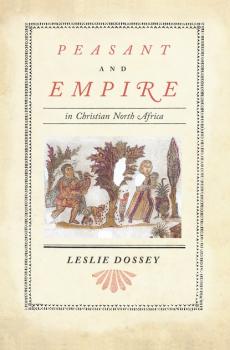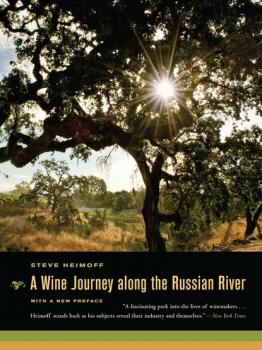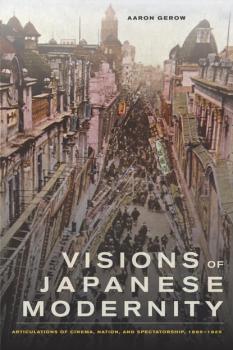MREADZ.COM - много разных книг на любой вкус
Скачивание или чтение онлайн электронных книг.The Other West
The Other West provides a provocative new interpretation of Latin American history and the region's place in the changing global political economy, from the discovery of America into the twenty-first century. Marcello Carmagnani's award-winning and multidisciplinary analysis sheds new light on historical processes and explains how this vast expanse of territory–stretching from the American Southwest to the tip of the Southern Cone–became Europeanized in the colonial period, and how the European and American civilizations transformed one another as they grew together. Carmagnani departs from traditional historical thought by situating his narrative in the context of world history, brilliantly showing how the Iberian populations and cultures–both European and American–merged and evolved.
Peasant and Empire in Christian North Africa
This remarkable history foregrounds the most marginal sector of the Roman population, the provincial peasantry, to paint a fascinating new picture of peasant society. Making use of detailed archaeological and textual evidence, Leslie Dossey examines the peasantry in relation to the upper classes in Christian North Africa, tracing that region's social and cultural history from the Punic times to the eve of the Islamic conquest. She demonstrates that during the period when Christianity was spreading to both city and countryside in North Africa, a convergence of economic interests narrowed the gap between the <i>rustici</i> and the <i>urbani</i>, creating a consumer revolution of sorts among the peasants. This book's postcolonial perspective points to the empowerment of the North African peasants and gives voice to lower social classes across the Roman world.
A Wine Journey along the Russian River, With a New Preface
Steve Heimoff takes readers on an intimate and enlightening tour of one of California’s most diverse and accomplished wine areas as he travels along the Russian River and talks with growers and vintners from the Cabernet country of the Alexander Valley to the Pinot Noir producers of the Sonoma coast. This first comprehensive look at the natural history and winemaking practices of the region by one of America’s most respected wine critics brings the Russian into the exalted company of the great wine rivers of the world—the Loire, the Rhône, the Rhine, the Mosel, and the Douro. Part wine guidebook, part history and geology, and part travelogue of the author's adventures in wine country, <I>A Wine Journey along the Russian River </I>is essential reading for wine lovers—both those fortunate enough to be familiar with the region and those who have never been there. <br /><br />Heimoff guides readers along the length of the scenic river, from its warm, northern border with Mendocino out to foggy Jenner. He discusses the history and progress of Alexander Valley Zinfandel and Cabernet Sauvignon, Russian River Valley and Sonoma coast Pinot Noir, Sonoma County's Rhône-oriented wines, old-style field blends, and other interesting wines. In the process, he introduces readers to many of the growers and vintners who have made Sonoma County famous: Dick Arrowood, the Rochiolis, the Seghesios, Tom Jordon, Bob Cabral of Williams Selyem, Jess Jackson of Kendall-Jackson, Merry Edwards, and many others. Describing how the river's formation and evolution, both products of the planet's fiery tectonic past, as well as the region's complex climate, have created the potential for unparalleled viticultural enclaves, and recounting how a variety of people realized that potential, Heimoff provides a fascinating explanation of why the Russian River's reputation as a premium winegrowing region continues to grow.
The Pastoral Clinic
The Pastoral Clinic takes us on a penetrating journey into an iconic Western landscape—northern New Mexico’s Española Valley, home to the highest rate of heroin addiction and fatal overdoses in the United States. In a luminous narrative, Angela Garcia chronicles the lives of several Hispanic addicts, introducing us to the intimate, physical, and institutional dependencies in which they are entangled. We discover how history pervades this region that has endured centuries of social inequality, drug and alcohol abuse, and material and cultural dispossession, and we come to see its experience of the opioid epidemic as a contemporary expression of these conditions, as well as a manifestation of the human desire to be released from them. With lyrical prose, evoking the Española Valley and its residents through conversations, encounters, and recollections, The Pastoral Clinic is at once a devastating portrait of immigration and addiction, a rich ethnography of place, and an eloquent call to political activists, politicians, and medical professionals for a new ethics of substance abuse treatment and care.
The Eastern Mediterranean and the Making of Global Radicalism, 1860-1914
In this groundbreaking book, Ilham Khuri-Makdisi establishes the existence of a special radical trajectory spanning four continents and linking Beirut, Cairo, and Alexandria between 1860 and 1914. She shows that socialist and anarchist ideas were regularly discussed, disseminated, and reworked among intellectuals, workers, dramatists, Egyptians, Ottoman Syrians, ethnic Italians, Greeks, and many others in these cities. In situating the Middle East within the context of world history, Khuri-Makdisi challenges nationalist and elite narratives of Mediterranean and Middle Eastern history as well as Eurocentric ideas about global radical movements. The book demonstrates that these radical trajectories played a fundamental role in shaping societies throughout the world and offers a powerful rethinking of Ottoman intellectual and social history.
The History of Human Rights
Micheline Ishay recounts the dramatic struggle for human rights across the ages in a book that brilliantly synthesizes historical and intellectual developments from the Mesopotamian Codes of Hammurabi to today's era of globalization. As she chronicles the clash of social movements, ideas, and armies that have played a part in this struggle, Ishay illustrates how the history of human rights has evolved from one era to the next through texts, cultural traditions, and creative expression. Writing with verve and extraordinary range, she develops a framework for understanding contemporary issues from the debate over globalization to the intervention in Kosovo to the climate for human rights after September 11, 2001. The only comprehensive history of human rights available, the book will be essential reading for anyone concerned with humankind's quest for justice and dignity. <br /><br />Ishay structures her chapters around six core questions that have shaped human rights debate and scholarship: What are the origins of human rights? Why did the European vision of human rights triumph over those of other civilizations? Has socialism made a lasting contribution to the legacy of human rights? Are human rights universal or culturally bound? Must human rights be sacrificed to the demands of national security? Is globalization eroding or advancing human rights? As she explores these questions, Ishay also incorporates notable documents—writings, speeches, and political statements—from activists, writers, and thinkers throughout history.
Parasites
Hidden away within living tissues, parasites are all around us—and inside us. Yet, despite their unsavory characteristics, as we find in this compulsively readable book, parasites have played an enormous role in civilizations through time and around the globe. <i>Parasites: Tales of Humanity’s Most Unwelcome Guests </i>puts amoebae, roundworms, tapeworms, mites, and others at the center of the action as human cultures have evolved and declined. It shows their role in exploration, war, and even terrorist plots, often through an unpredictable ripple effect. It reveals them as invisible threats in our food, water, and luggage; as invaders that have shaped behaviors and taboos; and as unexpected partners in such venues as crime scene investigations. <i>Parasites </i>also describes their evolution and life histories and considers their significant benefits. Deftly blending the sociological with the scientific, this natural and social history of parasites looks closely at a fascinating, often disgusting group of organisms and discovers that they are in fact an integral thread in the web of life.
Visions of Japanese Modernity
Japan has done marvelous things with cinema, giving the world the likes of Kurosawa, Mizoguchi, and Ozu. But cinema did not arrive in Japan fully formed at the end of the nineteenth century, nor was it simply adopted into an ages-old culture. Aaron Gerow explores the processes by which film was defined, transformed, and adapted during its first three decades in Japan. He focuses in particular on how one trend in criticism, the Pure Film Movement, changed not only the way films were made, but also how they were conceived. Looking closely at the work of critics, theorists, intellectuals, benshi artists, educators, police, and censors, Gerow finds that this trend established a way of thinking about cinema that would reign in Japan for much of the twentieth century.
The Managed Hand
Two women, virtual strangers, sit hand-in-hand across a narrow table, both intent on the same thing-achieving the perfect manicure. Encounters like this occur thousands of times across the United States in nail salons increasingly owned and operated by Asian immigrants. This study looks closely for the first time at these intimate encounters, focusing on New York City, where such nail salons have become ubiquitous. Drawing from rich and compelling interviews, Miliann Kang takes us inside the nail industry, asking such questions as: Why have nail salons become so popular? Why do so many Asian women, and Korean women in particular, provide these services? Kang discovers multiple motivations for the manicure-from the pampering of white middle class women to the artistic self-expression of working class African American women to the mass consumption of body-related services. Contrary to notions of beauty service establishments as spaces for building community among women, <i>The Managed Hand</i> finds that while tentative and fragile solidarities can emerge across the manicure table, they generally give way to even more powerful divisions of race, class, and immigration.
Hindu Goddesses
Goddess worship has long been a significant aspect of Hinduism. In this book David Kinsley, author of <i>The Sword and the Flute—Kali & Krsna: Dark Visions of the Terrible and the Sublime in Hindu Mythology</i>, sorts out the rich yet often chaotic history of Hindu goddess worship.









